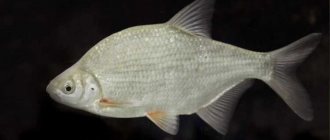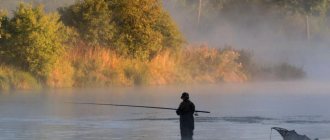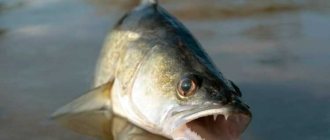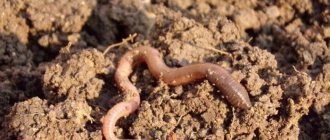Today, fish in Russia is one of the main foodstuffs for its residents. This is due to the fact that fish contains easily digestible protein for humans; at the same time, fish is a large storehouse containing a large number of macro- and microelements. Fish is especially rich in fat-soluble vitamins vital for humans - A, D, E. Fish oil is the main source of polyunsaturated acid "omega-3", which is essential for humans. For more information about the importance of fish in human nutrition, see our article - The biological importance of fish in human nutrition. At the same time, according to statistical data, fish, unlike meat products, is most often infected with worms (sea worms by 70%, river worms by 95%), and some of them can parasitize the human body.
Roundworms (nematodes) and flatworms (trematodes) are often found in fish, but not all of them are dangerous to humans. Often people who buy fish in a store have a completely natural question - is it possible to eat fish with worms that are inside the fish? If you prepare it correctly (freeze it for two weeks, boil it well or fry it), then there is nothing dangerous about it.
Bothriocephalosis of pond fish.
Bothriocephalosis is a cestosis of freshwater fish, recorded both in pond farms and in natural reservoirs. The most susceptible to this disease are juvenile carp, carp and grass carp, crucian carp, and silver carp.
The causative agent is Bothriocephalus gowcongensis. The body of the helminth is elongated, ribbon-shaped, with well-defined segments. The anterior margin is narrow, the posterior margin is somewhat widened. The length of mature helminths is 25-35 cm. The head has two slit-like bothria. The last segment contains the male and female reproductive systems. The uterus has the shape of a convoluted tube. The eggs are dark gray, with coarse-grained contents. The outer shell is dense and smooth.
Development cycle. Bothriocephalus develops with the participation of intermediate hosts - freshwater crustaceans (Cyclops). In summer, at a temperature of about 20°C, mature helminths release a huge number of eggs, which fall into the water along with excrement. After 2-3 days, a larva emerges from the eggs - coracidium, which is an oncosphere covered with a ciliated cover. Cyclops swallow coracidia, and after 10-12 days, invasive procercoid larvae develop in their body cavity.
For their further development, procercoids must enter the body of the fish. In the intestines of the fish, under the influence of digestive enzymes, the cyclops are destroyed, the released procercoids attach to the intestinal walls and after 2-3 weeks develop into sexually mature parasites.
In summer, bothriocerphalus live for 2-3 months. After the eggs mature and release, they die. Those helminths that developed in the body of fish in the second half of summer overwinter in the intestines, lay eggs in the spring and infect water bodies.
The degree of infection of fish with botryocephalosis depends on age, time of year, the number of cyclops in the pond and the degree of their infestation. The fry swallow the cyclops on the 6-8th day after hatching. With age, the severity of the disease in carp decreases. Fry at the age of two months are 100% infected with botryocephalosis, yearlings - by 37%, two-year-olds - by 12%, and three-year-olds - by 3-8%. The carriers of the invasion are carps older than three years. The maximum intensity of invasion (up to 700 parasites) is recorded in fry in mid-August, then it gradually decreases.
Invasion in fish occurs acutely and chronically. An acute course is recorded in fry and fingerlings, a chronic course is recorded in older fish.
Symptoms In sick fish, inflammation of the intestinal mucosa develops (and with intense damage, blockage and rupture of its walls may occur), the fish’s digestion process is disrupted and intoxication of the body occurs. The affected fish swims at the surface of the water, does not take food well, becomes lethargic, emaciated, has a hard time surviving the winter and often dies in the spring. In sick yearlings, emaciation and anemia of the skin and gills are noted; eyes sunken into their sockets.
The diagnosis of bothriocephalosis is made based on the results of a helminth-coprological study using the native smear method. For this purpose, excrement is squeezed out of the fish’s anus, diluted with water and examined under a microscope to detect eggs.
The disease can also be diagnosed by symptoms observed in fish, by epidemiological data, and postmortem by autopsy of the intestines. In infected fish, we note anemia of the gills, pale mucous membranes, pale liver, and enlarged gall bladder.
Differential diagnosis. This helminthiasis is differentiated from caryophylllosis, the causative agent of which has an unsegmented strobila of a smaller size.
Therapy. In farms unaffected by botryocephalosis, therapeutic and prophylactic deworming of fish is carried out with phenosal or kamala. Phenosal in an amount of 1% is included in the composition of medicinal granulated feed. Medicinal feed is given once or twice by free feeding according to generally accepted methods without a preliminary starvation diet.
Deworming is carried out at a water temperature of at least 14°C. Fledglings are dewormed after they are switched to artificial nutrition when the infestation rises in July-August; producers - before planting for spawning or wintering ponds.
The effectiveness of deworming is checked by helminthological opening of the intestines of carp underyearlings on days 3-4. If helminths are detected, then deworming is repeated.
Kamala. Fingerlings and yearlings are dewormed by adding the drug to the feed at the rate of 0.1 g, and two-year-olds - 0.3-0.4 g per fish. Kamala is mixed with dry food, mixed with water and given in the form of a dough-like mass 2-3 times every other day. The day before treatment and in the intervals between giving medicinal food, the fish are not fed. When deworming breeders and replacement young animals, Kamala is administered directly into the intestines: for breeders - no more than 1 g, for fish weighing 0.5-1 kg - 0.5 g. The drug is mixed with water (3 ml of water per dose of Kamala) and, using a syringe with a rubber tip, injected through the mouth into the first loop of the intestine.
Prevention. The nursery and feeding ponds that contained the affected fish are fished in the fall and the water is drained. Before importing fish to safe farms, it is examined for botryocephalosis. To prevent the penetration of the pathogen from unfavorable reservoirs, barrier gratings and a sand and gravel filter are installed on water supply channels. During control catches, autumn fishing of ponds and transplantation of fish, they are examined for infection with botryocephalosis.
If an invasion is detected, farms are declared unsafe. All fish grown on the farm are sold to the retail chain. If there are no feeding ponds, then with the permission of the regional veterinary service, the export of fish seeding material to other farms that have closed ponds is allowed. In the fall they are caught and all the fish are sold for food purposes. In the spring, when the wintering ponds are unloaded, the fish are examined, and the infected are raised in isolated ponds with an independent water supply. If there are no such ponds, the affected fish are placed in the ponds located last in the water supply.
Interesting Facts
Crucian carp is a simple fish, but has many interesting habits. In nature, there are only 2 types of such fish: golden and silver. Based on the first, the goldfish was bred.
Fishing for crucian carp is quite unstable. It can bite on completely different baits, so when going fishing you need to take several types. In reservoirs near Moscow you can find a hybrid of golden and silver crucian carp.
REFERENCE. Fish has a good sense of smell.
This must be taken into account when fishing. Some individuals prefer all strange smells that have nothing to do with their usual diet. Sometimes crucian carp are inactive, so experienced fishermen stir up the mud with a stick.
Crucian carp is the most unpredictable fish of all cyprinids. The success of catching such fish does not depend on weather conditions or bait. This fish has a large number of subspecies; not only freshwater and sea crucian carp are found.
Philometroidosis of carp.
The causative agent is the nematode Philometroides lusiana. They are quite large (10-12cm) helminths of a dark red color. Females parasitize in scales and scale pockets, males - in the walls of the swim bladder and, less often, in the kidneys and gonads. Having settled in scaly pockets in the fall, helminths remain in them throughout the winter and spring. As the temperature in reservoirs rises to 17-19°C, phylometers begin to secrete a huge number of larvae, where they are swallowed by Cyclops. In the cavity of the Cyclops larva, the larvae develop, molt twice and reach the invasive stage on the 8-10th day. Carp swallow infested cyclops and become ill with phylometroidosis. From the intestines of fish, the larvae penetrate into the body cavity, enter the liver, kidneys, where they develop, and on the 14th-15th day they perform the third molt. After this, the larvae move into the walls of the swim bladder. On days 18-21 they molt again, and by the 30-40th day young females and males are formed from them. Fertilized females penetrate through the muscles into the scale pockets, where they can be found in August-September. Females live 11-12 months. Males remain in the swim bladder and die after 13-14 days.
Infection occurs in spring and early summer. Outbreaks of the disease are recorded in those reservoirs where infected fish enter and where there are intermediate hosts - cyclops. The disease occurs when fish seeding material, breeding carps and replacement young stock are imported from farms unaffected by phylometroidosis. In addition, infected fish can enter safe bodies of water from unfavorable bodies of water with flows of water; if there are no barriers, infected cyclops can also be brought in with the water. It has been noticed that fish re-infestation is facilitated by planting fish of different ages in nursery and feeding ponds in poor farm conditions.
Scaly carp are the most susceptible to the disease; mirror and frame carp are less likely to get sick. Philometras are not found in naked carp.
Symptoms of the disease. Sick fish are inactive and stunted in growth. Affected fry stay at the bottom of the reservoir, lie on their sides or head down. Their swim bladder function is impaired. In infected fish, reddened tubercles or small tumors are visible on the surface, the scales are ruffled, and helminths curled into a spiral can be found under the scales. Two-year-old and three-year-old carp are most intensively affected.
Diagnosis. The diagnosis of the disease is made on the basis of an external examination of the fish and the detection of filometr in the scale pockets. The liver, kidneys and swim bladders are examined using the compressor method to detect larvae or migrating young and adult helminths.
Therapy. Ditrazine citrate is used for deworming. This drug is prescribed to producers and replacement young animals in spring and autumn at a dose of 0.3 g/kg. For this purpose, prepare a 30% solution of the drug in distilled water heated to 60-70°C and inject it into the fish, cooled, using a syringe with a rubber tip through the mouth into the first loop of the intestine or into the abdominal cavity, making a puncture with a needle. Treatment is most effective at a water temperature of at least 10-12°C.
Prevention is carried out by preventing the penetration of the pathogen from reservoirs with infected fish and cyclops. Barrier gratings and sand and grass filters are installed on waterfowl channels.
The nursery and feeding ponds where the infected fish were kept are fished and the water is drained for the winter.
In order to break the contact of fish with infected intermediate hosts (Cyclops) and to improve the health of producers and repairmen from phylometroidosis, they are transplanted from one pond to another after 7-8 days during the infection season. For this purpose, vacated wintering ponds or free spawning grounds are used. In the spring season, 3-4 transplants are carried out.
When transplanting fish, water is diverted outside the farm so that infected cyclops do not end up in other ponds. The export of live fish (commercial) from unfavorable ponds for sale to the retail chain is not limited, but measures are taken to prevent this fish from getting into live fish cages and other fishery reservoirs.
Price
Answer the question “How much does crucian carp cost?” It’s definitely possible – it’s cheap. This fish is widespread in Russia, both in the wild and commercially. The harvest of crucian carp is carried out successfully from year to year, so it cannot be said that this is a rare product and cannot be found in the nearest market. This fish can often be purchased from ordinary amateur fishermen, who sell their catch at an affordable price. Thus, fresh, unpeeled crucian carp costs about 40 rubles. for 1 kg.
Dried crucian carp will cost a little more, about 110 rubles. for 1 kg, but it is worth considering that drying is a difficult process in which the fisherman invests his labor and time. Compared to other subspecies of fish, dried crucian carp is very cheap, and besides, it is an excellent snack for beer or a simple side dish. A peculiarity of crucian carp is the absence of a pronounced river and grass smell, which repels many buyers and lovers of eating fish.
Diplostomy.
Diplostomy is caused by fish parasites such as Posthodiplostomum cuticola, Diplostomum spathaceum, Posthodiplostomum minimum belonging to the class of trematodes or flatworms.
Diplostoma cuticle parasitizes near the eye of the fish - in the pectoral fins, gills, and sometimes in the eyeballs. This parasite is found everywhere in Russia in fresh water bodies. Diplostom is found in perch and cyprinids, in particular in perch and roach.
Diplostoma spataceum in fish parasitizes exclusively in the lens. Upon external examination, such a fish has blurry eyes and during its life, the fish loses its vision due to an active inflammatory process in the eyes. The following are especially susceptible to the disease:
- Salmonidae (consumers often find diplostome in red fish - chum salmon, salmon, sumgu, coho salmon, sea trout, as well as pink salmon).
- Cyprinids (bream, carp, crucian carp, roach, tench, silver carp).
- Perch (especially often these worms are found in sea bass).
- Whitefish (whitefish, nelma).
Lifestyle
All species and breeds are schooling fish and are unable to survive alone. How many years crucian carp live depends only on living conditions, but on average up to 10-12 years, less often – longer. Fish prefer quiet places where there is minimal current and the water is rich in algae. This is one of the few species that can survive in heavily swampy water bodies, but under one condition - an abundance of river vegetation.
By nature, fish are quite phlegmatic and slow. This is especially pronounced during the spawning period, as well as on hot days. Representatives of the species live in small flocks, this protects the species from extinction. Because of their slowness, fish often become prey for predators, especially young individuals. But a gregarious lifestyle increases the chances of survival.
"Caucasus-fish" will breed rainbow trout
Caryophylllosis.
Caryophylllosis is caused in fish by the cestode Caryophyllaeus fimbrieps. This parasite is found in many freshwater fish and is found both in pond farms and in natural reservoirs. This invasive disease mainly affects two-year-old carp. It is less common in fish of the first year of life (year-olds) and much less common in three-year-olds.
Pathogen. The body of the parasite is elongated, smooth and not divided into separate segments. The length of mature individuals ranges from 15 to 65 mm. The head end is somewhat wider than the rest of the body and is rounded in the form of a semiring. The head has many folds or convolutions. These fixatives are used to attach the parasite to the mucous membrane of the host. In general, the head resembles a carnation flower, hence the name - carnation. The width of the tape is almost the same throughout, and only at the site of the cloaca is it slightly increased (bloating). The tail end is narrowed. There is no digestive system. Nutrients enter the body osmotically, and metabolic products are secreted by special organs - protonephridia. Almost the entire body is filled with gonads - testes and vitellines. The ovary is single, compactly located, next to it lies the uterus in the form of a thin convoluted tube filled with mature eggs.
The development cycle of the pathogen occurs with the participation of an intermediate host - the oligochaete tubifex worms - Tubiefex tubiefex and Psammerietes albicola, living at the bottom of reservoirs. The development of the helminth from egg to mature individual lasts about a year. Eggs can get to the bottom of the reservoir with carp secretions. With the onset of warmth in the reservoir, an embryo is formed inside the egg, and carp become infected with cloves in early spring - in March-April, when the fish begin to feed after winter. In June-July, mature eggs of the parasite fall from the intestines of the fish into the sludge, and there an embryo develops in the egg. After some time, the formed embryo in the eggs, together with the sludge, enters the intestines of oligochaete worms, the intermediate hosts of carnation. There are many of these worms in reservoirs, and in early spring they serve as the main food for fish. In the intestines of the worm, caryophylleus embryos are released from the egg shells, penetrate into the body cavity, and the larvae of the parasite develop there. They overwinter in the body and next spring become a source of new damage to carp. In fish, cloves are localized in the middle intestine, where they persist for 2-3 months.
Many freshwater fish become infected with caryophylllosis. But in carp ponds, one-year and two-year-old carp are most intensively infected. The greatest infestation by the parasite occurs in May-June. By autumn, the extent and intensity of infection sharply decreases, which is associated with a decrease in the number of intermediate hosts - oligochaete worms in ponds. In addition, some of the helminths die and leave the intestines.
In many fish farms, fish have been artificially fed since June, and they accept less natural food and concentrate more on feeding areas and near them. Thus, by the end of summer, the links of the epizootic chain are partially broken, but by autumn, a huge number of carnation eggs and then their larvae accumulate in the soil again, and a number of adult worms remain in the ponds, immersed in silt.
In addition to two-year-old fish, underyearlings and three-year-old fish are infected with the disease, but the intensity and extent of the invasion in them is significantly lower than in two-year-old fish.
In neglected, silted ponds, the invasion persists for many years.
Cloves live in the anterior and middle intestines of fish. Ulcers often form at the site of helminth attachment. In addition, caryophylleuses put pressure on surrounding organs and cause their atrophy. All this adversely affects digestion, as a result of which the fish becomes exhausted and subsequently dies.
Symptoms of the disease are very diverse and depend on the intensity of infection, age, time of year, availability of food, etc. The disease manifests itself most clearly in early spring after a long period without food, especially in infected yearling carp. Upon external examination, we note that their external integuments are anemic and severely emaciated. The back of the affected fish is pointed, the body is flattened laterally, the head is greatly enlarged, the abdomen is tucked up, the eyes sink into the orbit, but the color of the gills remains normal. In two-year-old carp, heavily infested with carnation plants, the signs of caryophylllosis are basically the same as in yearlings.
Diagnosis. During the life of fish, a diagnosis of caryophylllosis is made on the basis of epidemiological data, symptoms of the disease and the results of helminthological studies of fish; post-mortem examination of fish followed by examination of intestinal contents.
Therapy. Kamala is used as a medicinal drug in a dose of 100 mg per fingerling or yearling weighing on average 50 g. If there is no Kamala, phenothiazine is prescribed. It is given as food in the form of a dough-like mass. A single dose of phenothiazine is 80 mg per fingerling or yearling of carp. For complete relief from helminths, the drug is given 3 times 80 g with an interval of 1-2 days. Before deworming, the fish are kept on a starvation diet for at least 24 hours. After treatment, the ponds are drained, the bed is disinfected, dried and plowed.
To monitor the effectiveness of deworming, 50-80 specimens of fingerlings or yearlings of carp are opened before and after treatment.
Prevention. In unfavorable farms, after catching fingerlings, nursery ponds are drained for the winter, ditches and streams are cleaned, all wetlands are drained, and if necessary, the ponds are treated with quicklime or bleach. In the spring, the beds of these ponds are dried, plowed, and fertilizers are applied to create conditions for the fry. Pay attention to fish farming activities, the implementation of which makes it possible to grow planting material free from Caryophylleus.
In nursery ponds in the fall, during the period of fish processing in baths, or in the spring, the fish seeding material is carefully inspected and carp fingerlings with caryophylllosis are discarded. The disease is diagnosed by autopsy of the fish. If a small number of fish are affected, they are destroyed as carriers of the invasion or the fish are fed with the addition of antibiotics.
To identify the contamination of planted carp fingerlings, 15-25 fingerlings from each rearing pond are opened at the beginning of September. If infected fish are detected, deworming is carried out.
Feeding ponds are cured of caryophylllosis by periodic summering (once every 4-5 years). Fish seeding material is brought into these ponds only from prosperous farms.
In intensively infected ponds, it is recommended to breed yearlings of crucian carp and bream to destroy larvae. they are not susceptible to this disease.
Wintering ponds containing infected fish are made healthy by draining the bed, digging out vegetation, disinfecting with quicklime, etc.
Fish worms that are dangerous to humans.
Opisthorchosis is a natural focal helminthic disease of mammals, carnivores, and humans, caused by parasitism of the trematode Opisthorchis felineus, which parasitizes the hepatic ducts, gall bladder and pancreatic ducts. Most often, the carriers of the helminth are dogs and cats, and the additional host with the participation of which their development occurs are fish of representatives of cyprinids (ide, dace, chebak, roach, bream, rudd, etc.). During the development cycle, from the parasite eggs swallowed by the mollusk, larvae develop - cercariae, which enter the water and actively penetrate the body of cyprinids, encysting in their subcutaneous tissue and muscles, turning into metacercariae. Infection of mammals and humans occurs when eating raw fish infested with metacercariae. A person can become infected with opistarchosis by consuming raw fish, as well as after inadequate heat treatment. The disease in humans is accompanied by damage to the liver, pancreas, gallbladder and its ducts.
Prevention. In areas of opistarchosis, you should not feed raw fish to cats, dogs and fur-bearing animals. Infested fish are excluded from the animals’ diet or rendered harmless by boiling for at least 30 minutes. Freezing small fish (10-16g) at temperatures from minus 8 to minus 12°C kills metacercariae in it after 4-5 days, in large fish – after 17-20 days. It is necessary to protect water bodies from contamination with feces, systematically examine animals and treat them if opistarchosis is detected.
Symptoms of helminth infection
Complaints from people who have parasites in their bodies can be very diverse. The following symptoms of helminth parasites are possible:
- indigestion, increased gas formation, unstable stools, frequent abdominal pain, itching in the anus;
- pain and inflammation in the joints;
- skin rashes, skin itching:
- weakness, fatigue, hair loss, low hemoglobin levels;
- mental depression, irritability, anxiety, grinding teeth and drooling during sleep, insomnia and other sleep disorders;
- feeling unwell for no apparent reason or diagnosis.
Increased sensitivity to allergens can also be the result of the activity of worms. It is believed that more than half of all allergic reactions and even cases of bronchial asthma may be the result of existing or previously experienced helminthiasis.
Diphyllobothriasis
Diphyllobothrioses is a dangerous helminthic disease of humans and carnivores caused by cestodes of the genus Diphyllobothrium. In Russia, the wide tapeworm Diphyllobothrium latum is found more often than other species.
The strobila D. latum has a length from 1 to 10 m. The scolex is devoid of hooks and has two deep bothria. The number of segments can reach up to 4000 pieces. The segments are short and wide, each segment has 3 genital openings (uterus, vagina, cirrus). The eggs are oval in shape, 0.068-0.071 by 0.045 mm, equipped with a cap at one pole. The egg contains a special embryo - coracidium, with 6 hooks.
The development cycle of the wide tapeworm occurs with the participation of intermediate hosts - crustaceans - Cyclops, Diaptomus, etc., and which is dangerous for humans with the participation of additional hosts - pike, perch, ruffe, burbot and other fish. Human infection with diphyllobothriasis (wide tapeworm) occurs by eating insufficiently heat-treated fish, by eating dried and insufficiently salted fish, when the technology for salting fish is not followed. Once in the human body, the helminth parasitizes in the small intestine. The parasite can live in the human body for up to 20 years or more.
From the moment of infection to the appearance of the first symptoms in a person, it takes from 20 to 60 days. The disease is accompanied by nausea, sometimes vomiting, abdominal pain, and a slight increase in body temperature. The disease is characterized by the development of B12 deficiency anemia, which manifests itself in a person with weakness, dizziness, fatigue, the development of swelling on the face and limbs, etc.
The diagnosis of the disease is made by medical professionals based on clinical and epidemiological data and laboratory test results.
Prevention. In order to prevent the disease, the caught fish is boiled, frozen in the refrigerator (they die at minus 15°C for 24 hours, at minus 4-6°C for 10 days), and salting technology is followed (the salt content must be at least 9%).
Worms in sea fish
There is a high probability of infection with helminthiasis when eating dishes prepared from sea fish affected by worms that have not undergone the necessary processing.
Tapeworms in pollock and sea bass
Pollock is one of the most accessible fish for the majority of the population. At the same time, it ranks first in terms of the degree of parasite infestation. The very popular sea bass is no less dangerous. A common type of helminth that affects these fish species is tapeworms. By carefully examining the insides of the fish when cutting, they can be detected even with the naked eye.
RECOMMENDATION! In frozen pollock and sea bass, parasite larvae are more difficult to detect. Therefore, it is recommended to clean the fish only after complete defrosting.
What do worms look like in pollock?
Helminths and their larvae in pollock are found on the inner surface of the abdominal cavity, viscera, and muscles. Among them are found:
- Cestodes are tapeworms that are most often found when cutting infected fish due to their size. The largest representative of this class is the broad tapeworm, an adult of which can reach a length of 10 m.
- Trematodes are flatworms that are almost impossible to detect visually.
- The Siberian fluke is a miniature parasite measuring no more than 12 mm. Outwardly, it resembles an elongated translucent leaf.
- Chinese fluke. Differs in larger sizes – up to 25 mm.
Even having an idea of what worms look like in fish, it is not always possible to detect them visually. The presence of many types of helminths is detected only through laboratory tests.
Diphyllobothriasis
One of the most common types of helminthiasis, the causative agent of which is the broad tapeworm, as well as other, less studied tapeworms. When a person consumes infected fish, he or she becomes the definitive host of the parasite. The disease does not have specific symptoms, so it is often detected when pieces of the worm are noticed in the stool. The organs of the digestive tract are mainly affected. The patient experiences periodic abdominal pain and weakness. Often there is upset stool, vomiting, lack of appetite, and changes in taste sensations. Sometimes allergic rashes occur in the form of hives.
Roundworms in herring, cod and pink salmon
Photo of what worms look like in Cod
Even fish that is considered a delicacy does not guarantee the absence of helminths in it. Poorly processed salmon, pink salmon, and chum salmon cause serious pathological processes in the body. Nematodes (roundworms) enter the human intestine in the stage of yellowish larvae. There can be up to a thousand worms in red fish. Fans of raw or lightly salted fish, sushi, and rolls are most at risk of becoming infected. Cod, beloved by many, is often affected by microscopic crustaceans, which, when decomposed, cause purulent processes.
What do worms look like in herring?
Parasites in fish are eliminated when exposed to high temperatures. However, herring is sold in a ready-to-eat form and is not subject to heat treatment. As a result, the risk of helminthiasis infection is quite high. Due to their presence in a saline solution, worms and larvae acquire resistance to an aggressive environment. Once in the human digestive system, they reproduce successfully. The most common worms in salted fish are:
- Cat fluke. A parasite with an elongated flat body about 3 cm in size, the causative agent of opisthorchiasis.
- Wide tape. A tapeworm that causes diphyllobothriasis.
- Anisakids. The worms are spindle-shaped, reaching a length of up to 6 cm. At one of its ends there are three lips.
The larvae of the latter are the most dangerous. They can cause anisakiasis, a serious disease accompanied by severe complications.
Anisakidosis
The larvae of the parasite are localized inside the gastrointestinal tract, which leads to damage to the mucous membrane with characteristic symptoms:
- Nausea, vomiting.
- Stool disorders.
- Flatulence.
- Pain in the iliac region.
- Allergic rashes.
In some cases, anisakidosis is accompanied by fever, cough, and sore throat caused by the reflux of bile into the esophagus. Lack of timely treatment threatens intestinal obstruction and peritonitis. Staying in the human body for 3 weeks to 3 months, helminth larvae cause irreparable damage to human health. Knowing about the consequences of anisacidosis, the question of whether it is harmful to eat herring with worms is no longer worth it.











